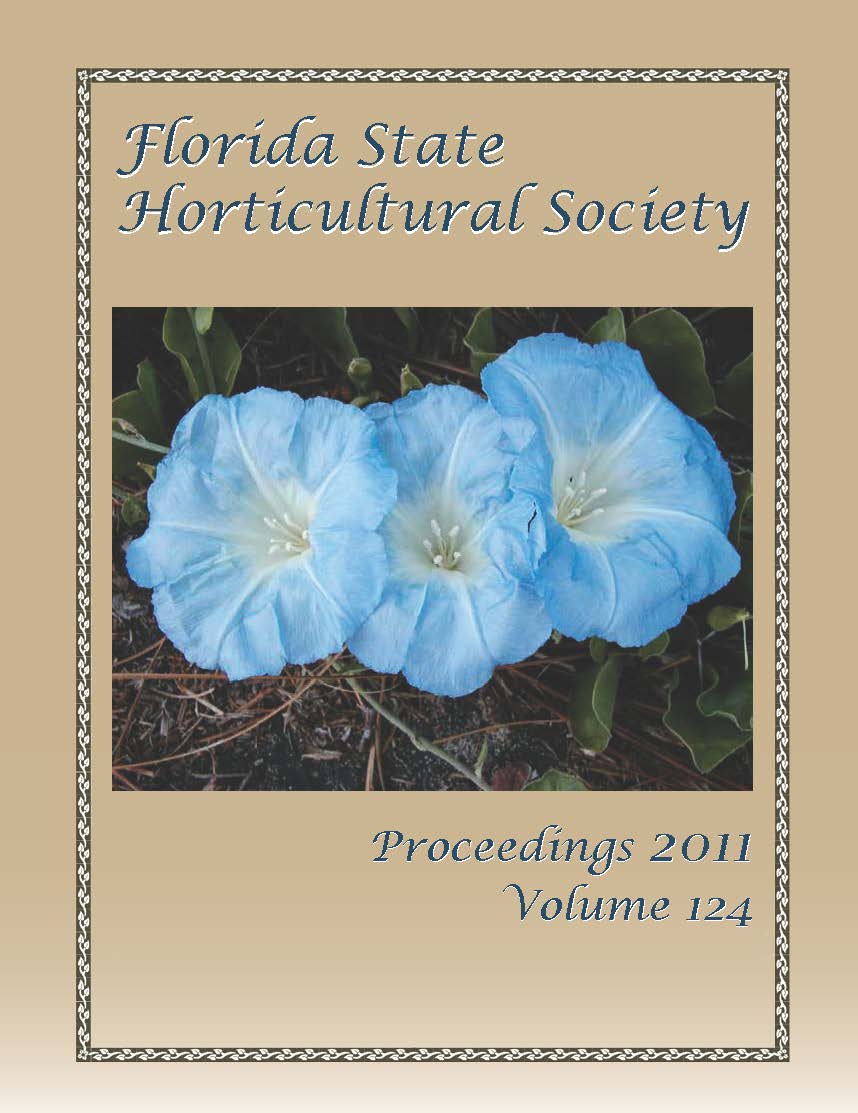Published 2011-12-01
Keywords
- Fragaria ×ananassa,
- sprinkler irrigation,
- water management,
- best management practices,
- cold weather
Abstract
A study was conducted to compare the performance of freeze protection methods on strawberry (Fragaria ×ananassa Duch.) growth and yields. Treatments consisted of using: a) 4.5 gal/min sprinkler heads (control), b) 3.5 gal/min sprinkler heads, c)heavy row covers on the crop canopy (0.9 oz/yd2), d) heavy row covers on 1.5-ft high minitunnel hoops, e) light row covers on the crop canopy (0.6 oz/yd2), f) light row covers on 1.5-ft-high minitunnel hoops, and g) 16-ft high tunnels. The minimum air temperature without freeze protection practices in the field during the season was 21 °F, but the minimum temperature directly above the crop canopy was 34 °F in covered plots regardless of the cover weight and the use of hoops and 33 °F inside the high tunnels. No water was needed in plots with row covers and inside high tunnels, whereas approximately 39 acre-inch/acre of water were needed in the control plots. Using non-irrigation alternatives for freeze protection resulted in the highest early and total fruit weights, where total yields in plots treated with these non-irrigation alternatives ranged between 15.1 and 15.4 ton/acre while there was approximately a 20% fruit weight decline when sprinkler irrigation was utilized, regardless of the output volume.

